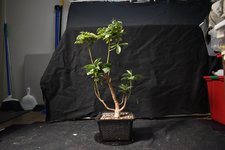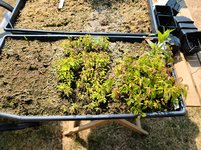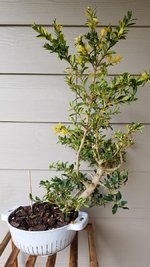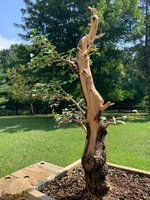I'm growing populus trichocarpa. One of my teachers (Andrew Robson) is diving into p. trichocarpa as well, so with his much larger collected trunks and superior growing setup / skills I hope we can more quickly figure out what can be expected from cottonwood in terms of making and keeping nice detailed branches.
Following the spirit of
@Cruiser 's thread, some notes.
Black cottonwood (and probably the close-ish relatives like eastern cottonwood and fremont cottonwood and other poplars) is more technically challenging to figure out than a species like Japanese Maple. I would mainly grow it if you have a strong personal love for these species in the natural environment (eg: high desert cottonwoods for me) and I wouldn't grow it if your priority is a highly-predictable response from techniques learned on other species. In populus there are better leaf shapes (trembling aspen, black poplar, fremont cottonwood, eastern cottonwood all have nicer leaf shapes with more stable morphology). Similar to black pine, it takes a lot of ramification and maturing in a black cottonwood to get the leaf size and leaf shape to stabilize globally. Leaf shape is strongly affected by local vigor. Mature leaves look like wide/stumpy aspen leaves. Immature/vigorous leaves look like skinny/elongated willow leaves. So IMO this species is better if you are after a winter display, especially in the earlier years. One interesting side note is that this species is found all over the planet even though it's a US west coast native. If you are in northern europe you're probably never far from a black cottonwood that you could propagate via cuttings (check the iNaturalist map). They even have them in Iceland.
Growth stuff:
- Cuttings of all shapes and sizes will root at various times of year. 1 inch cuttings, 48 inch cuttings. Or a 5 foot branch chopped into 1-2 inch cuttings like a sausage.
- Full defoliation works well at stimulating a robust response, even on cuttings
- Partial defoliation (whether leaf removal or leaf cutting) works less well at stimulating a robust response
- Barking up to the rougher form happens fast
- Wounds close quickly if the tree is vigorous, kirikuchi works
- Pinching works and I can pinch continuously through a summer
- Sucker growth is a danger to canopy sustainability, esp. in the 12-24 months after a major stress (post-collection, big cutback, etc). The longer in training the less suckers are an issue. Suckers must be removed or aggressively pinched as they happen
- Balancing out your work generally (pruning/wiring/pinching intensities vs. leftover extensions) so that strong parts don't weaken weak parts is key
If you're liking the red alder
@pandacular , see if you can find sitka alder. Look for more serrated/shiny-waxy leaves. I often find lots of seedlings of this species growing in straight pumice along creeks at higher elevations (~4000ft), it feels like an alder that might like pond basket life in an urban setting and bonsai horticulture.
This year I rooted a bucket of populus nigra (black poplar), which seems to root from cuttings easily much like cottonwood does. These are found all over the PNW and the trunk bases are usually covered with basal suckers so it's easy to harvest cuttings for forests.




















